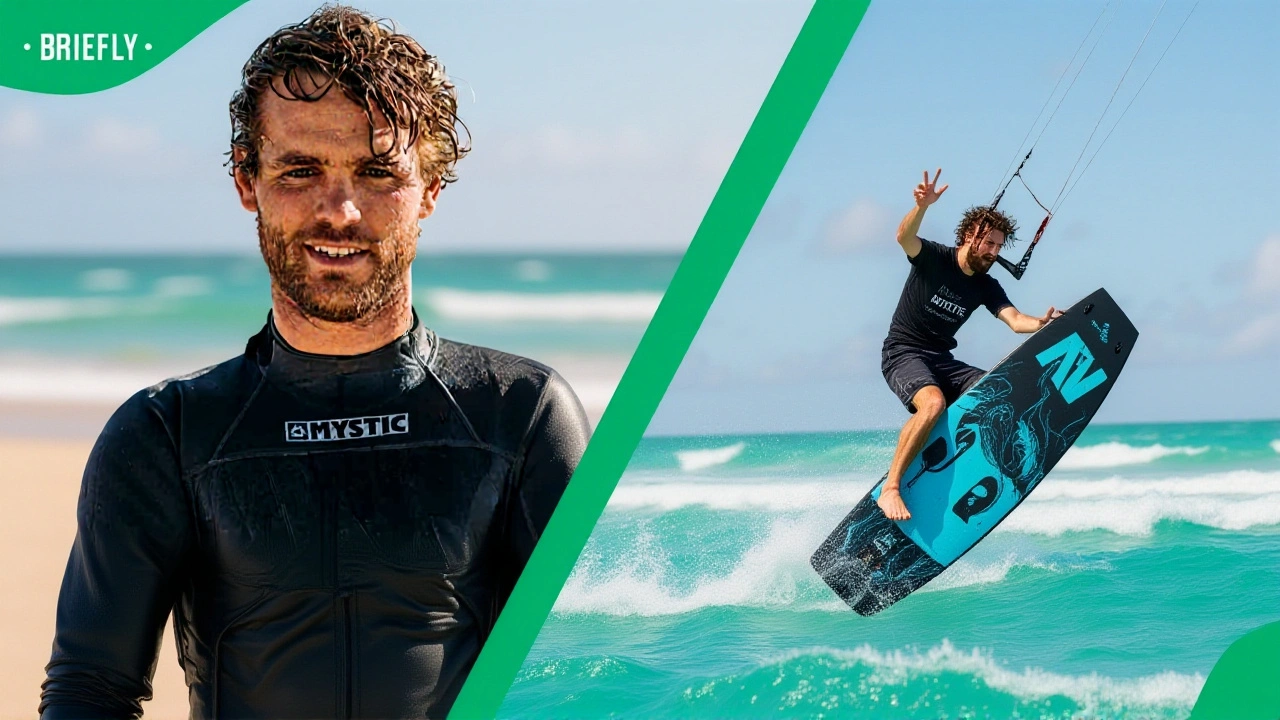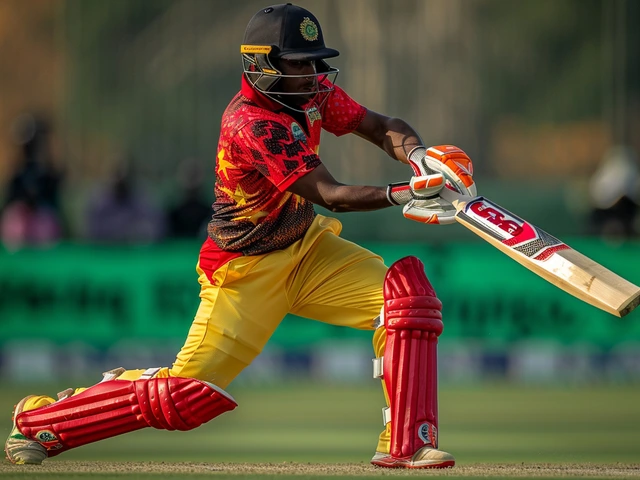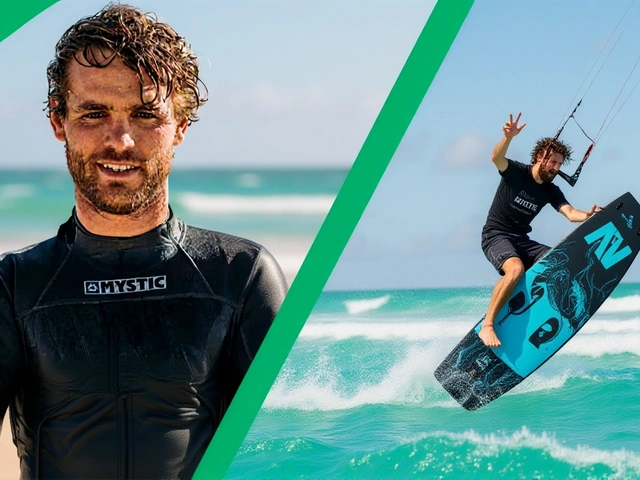When Graham Howes, a 38‑year‑old kitesurfer from the Cape Town extreme‑sports scene was struck by a whale off Bloubergstrand on September 7, 2024, coroners confirmed a freak kitesurfing accident that has shaken South Africa’s water‑sport community.
The incident unfolded near Eden on the Bay, a popular launch spot just a few kilometres north of the iconic Table Mountain backdrop. Howes, who had been kiteboarding offshore around 13:00 that Sunday, ventured into a pod of southern right whales that frequent the coastal waters during their breeding season. A massive adult, estimated to weigh over one ton, collided with his board, snapping the kite lines and sending the board spiralling.
Within seconds the impact rendered Howes unconscious; his safety release failed to engage, and he sank beneath the surface. By the time the NSRI Melkbosstrand duty crew received his missing‑person report just before 20:00, the daylight was fading and the sea was growing choppy.
Background: Kitesurfing on the Cape
Kitesurfing has exploded in popularity along South Africa’s west coast, thanks to consistent winds, warm waters and a laid‑back beach culture. Bloubergstrand, flanked by the sprawling suburb of Milnerton, is a magnet for locals and tourists alike, offering an average of 9 hours of wind per day during summer. The region’s marine life is equally famous; southern right whales migrate close to shore between June and November, offering spectacular sightings for both divers and, occasionally, reckless riders.
According to the South African Kitesurfing Federation, the area sees roughly 2,500 registered participants each season, with a safety record that is generally commendable. Yet the combination of high‑performance equipment and unpredictable wildlife has always posed a hidden risk—a risk that, until now, had never resulted in a fatal encounter.
What Happened on September 7
At 12:45 p.m., Howes launched his kite from Eden on the Bay, a spot known for its clear water and relatively calm swell. He was filming his session with an action cam that later captured the moment the whale breached the surface, propelling itself into the path of his board.
Witnesses on a nearby fishing boat reported seeing a "massive splash" followed by a sudden silence. The kite lines were found tangled around a broken mast, and the board bore a deep gash consistent with a high‑impact collision. The camera footage, recovered by investigators, showed the whale’s dorsal fin striking the board at approximately 12 km/h—a force that, according to marine biomechanical models, translates to over one ton of pressure on a human‑sized object.
When Howes failed to return to shore, the alarm was raised. Within minutes, a coordinated rescue effort sprang into action, involving ten private vessels, three coast‑guard helicopters, and two SAR teams from the South African Navy. The operation covered a 5‑kilometre radius and lasted over three hours, but the cold water (18 °C) and the depth of the impact zone hampered recovery.
Investigation and Official Findings
Following the recovery of Howes’ body on September 8, a multi‑agency investigation was launched. Three independent autopsies were performed by forensic pathologists from the Western Cape Coroner’s Office, each confirming the same cause of death: traumatic brain injury caused by the whale impact, followed by drowning.
Key pieces of evidence included:
- Snapped kite lines measuring 7.3 m, consistent with a sudden, high‑force pull.
- A severely bent mast broken at a 30° angle, indicating an impact from above.
- The unreleased safety mechanism, which experts say would have detached the rider only after a sustained tension—a condition not met in an instant impact.
- Medical reports showing skull fractures consistent with a blunt‑force collision exceeding 1,000 kg·m/s.
Marine biologist Dr Lindiwe Mthembu from the University of Cape Town was consulted to assess whale behaviour. She explained, "Southern right whales are generally non‑aggressive, but during the breeding season they can become highly protective of calves. A sudden surge of movement can inadvertently create hazardous conditions for nearby humans, especially fast‑moving craft like kitesurf boards."
The coroner’s final statement, released on September 12, declared the death an "unprecedented marine‑wildlife accident" and offered closure to Howes’ family and friends.
Community Response and Tributes
The kitesurfing community reacted with a mix of sorrow and disbelief. Local group Dirty Habits posted a heartfelt Facebook tribute four weeks after the tragedy, writing, "Today marks four weeks since we lost our brother, Graham. On September 7th, he suffered a tragic accident while kitesurfing in Cape Town. Following an extensive investigation...the impact caused him to lose consciousness instantly, which led to him drowning peacefully."
Several professional riders, including world champion kite surfer Jasmine van der Merwe, shared memories of Howes’ mentorship on social media, describing him as "the guy who taught me to read the wind and respect the ocean’s power."
Local authorities, represented by the Western Cape Emergency Services Director, promised to review safety protocols for water‑sport activities in high‑traffic marine zones. A memorial service held at the Bloubergstrand promenade drew over 150 mourners, many of whom released biodegradable lanterns into the night sky to honour Howes.
Implications for Safety and Marine Wildlife
In the wake of the incident, the South African Kitesurfing Federation announced a temporary suspension of kite‑launches within a 500‑metre radius of known whale breeding grounds during the peak season. The draft policy, slated for council review in early 2025, would require riders to carry an automatic release device capable of detaching the kite within 2 seconds of a sudden tension spike.
Environmental groups, such as the Marine Conservation Society, welcomed the move but warned that stricter enforcement will be needed to protect both humans and marine mammals. "We must remember that we share these waters," said society spokesperson Thomas Nkosi. "Preventing tragic accidents like this one protects the integrity of the ecosystem and the safety of our athletes."
Meanwhile, researchers are calling for a deeper study into the acoustic and behavioural triggers that lead whales to breach near active water‑sport zones. The incident may become a case study in marine‑wildlife interaction courses worldwide.
Frequently Asked Questions
How did the whale’s impact cause Graham Howes’ death?
The collision delivered a force estimated at over one ton, crushing Howes’ skull and instantly rendering him unconscious. Because his safety release did not engage, he remained submerged and drowned before rescuers could reach him.
What safety measures are being considered for kitesurfers?
Authorities are drafting rules that would restrict kite‑launches within 500 m of known whale pods during breeding months and mandate rapid‑release safety systems that detach the kite within two seconds of a sudden pull.
Why are whales present near Bloubergstrand in September?
Southern right whales migrate along the South African coast each winter to breed and calve. The sheltered bays around Bloubergstrand offer calm waters ideal for mother‑calf pairs, making the area a hotspot for sightings between June and November.
How did the rescue operation unfold after Howes went missing?
The NSRI Melkbosstrand activated a multi‑agency response involving ten private vessels, three helicopters, and two naval SAR teams. The coordinated search covered a five‑kilometre radius for over three hours before the body was recovered.
What impact has the tragedy had on the local kitesurfing community?
The loss has prompted widespread mourning, with riders sharing tributes and calling for improved safety. Some competitions have been temporarily paused, and the community is rallying around Howes’ family while advocating for policy changes to prevent similar accidents.








Surya Banerjee
October 7, 2025 AT 03:46Gotta say, regular safety checks are a must before every ride, especially around whale season. The release mechanisms should be tested in real‑world conditions, not just in a lab. If we all stay vigilant, tragedies like this can be avoided.
Sunil Kumar
October 8, 2025 AT 08:06Oh sure, because the ocean just hands out safety manuals with a side of whale‑breaching drama.
But seriously, a quick triple‑check on your gear could've been the difference between a story and a headline. Next time, maybe keep the kite on a reef while you admire the whales from shore.
Ashish Singh
October 9, 2025 AT 13:16It is incumbent upon our sporting federations to enforce stringent safety protocols for all participants, irrespective of their skill level. The recent incident serves as a solemn reminder that negligence bears profound moral consequences.
ravi teja
October 10, 2025 AT 15:40Man, that was a wild day on the water – never thought the ocean could throw a whale at you like that. Gotta respect the sea, but also respect your own gear.
Harsh Kumar
October 11, 2025 AT 19:26Stay safe out there, folks – double‑check that release and keep an eye on marine life. 🙏🙂
suchi gaur
October 12, 2025 AT 23:13Tragic indeed, but perhaps a cautionary tale for the elitist few who think they can dominate nature. 🌊🤿
Rajan India
October 14, 2025 AT 03:00Wow, that’s intense! Hope everyone’s taking this as a sign to be more mindful and maybe chill a bit on the high‑speed runs.
Parul Saxena
October 15, 2025 AT 06:46The interplay between human ambition and oceanic unpredictability has long been a subject of philosophical contemplation; in this instance, it crystallizes into a stark illustration of our fragile place within the marine ecosystem. While the allure of kitesurfing lies in harnessing wind and wave, the very act reaffirms our dependence on forces beyond our control. Ancient mariners revered the sea as a living entity, a sentiment echoed by contemporary marine biologists who emphasize the sentient nature of cetaceans. When a southern right whale, driven perhaps by protective instincts during its breeding season, inadvertently collides with a rider, it underscores a mutual misunderstanding inherent in shared spaces. The incident also provokes discourse on the adequacy of current safety mechanisms, which appear designed for predictable scenarios rather than sudden, high‑impact encounters. From an ethical standpoint, the responsibility to adapt equipment to accommodate such rare but catastrophic events becomes glaringly apparent. Moreover, this tragedy invites a broader societal reflection on how modern recreation often overlooks the subtle cues of the natural world in pursuit of adrenaline. If we consider the ocean as a partner rather than a backdrop, the dialogue shifts toward collaborative coexistence. The recommendation to establish a 500‑metre exclusion zone around whale pods is a pragmatic step, yet its enforcement will depend on community compliance and institutional will. In parallel, the development of rapid‑release devices capable of reacting within two seconds could mitigate the physical repercussions of unexpected forces. The academic community might also seize this moment to deepen research into the acoustic triggers that cause whales to breach, potentially forecasting hazardous interactions. Ultimately, the narrative of Graham Howes serves as both a memorial and a catalyst, urging athletes, regulators, and scientists to re‑evaluate their relationships with marine life. By honoring his memory through actionable change, the kitesurfing community can transform grief into progress, fostering a safer environment for future enthusiasts while preserving the sanctity of the ocean’s inhabitants.
AMRESH KUMAR
October 16, 2025 AT 10:33Patriotic spirits must rise – protect our waters, protect our heroes! 🇿🇦💪
uday goud
October 17, 2025 AT 14:20Indeed, the confluence of sport and marine biology-a delicate balance, demanding respect, vigilance, and, above all, harmonious coexistence! Let us, as custodians of culture and nature, champion rigorous standards, ensuring that every gust of wind is met with preparedness, and every breach is a reminder of shared stewardship.
Chirantanjyoti Mudoi
October 18, 2025 AT 18:06While many hail this as an unavoidable act of nature, I’d argue it emphasizes how over‑confident athletes often underestimate the ocean’s power.
Vishal Kumar Vaswani
October 19, 2025 AT 21:53What if the whale’s behavior is being subtly manipulated by hidden sonar installations? 🤔🔍
Zoya Malik
October 21, 2025 AT 01:40Another tragedy that will haunt the community forever.